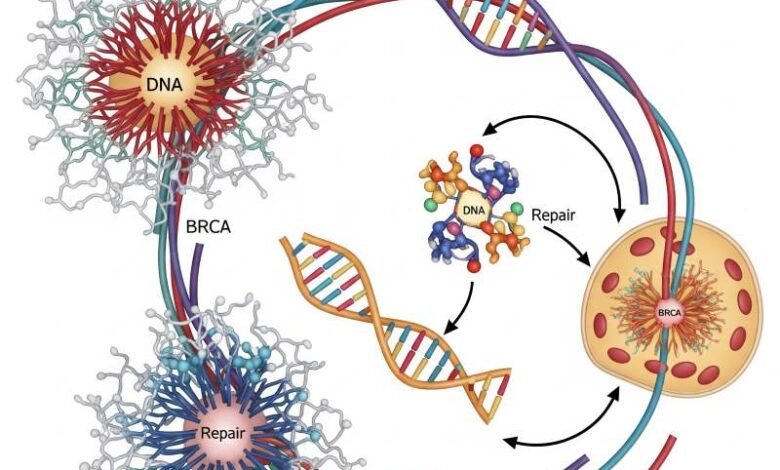Study Sheds Light on BRCA Gene Variants in MENA Region

A groundbreaking systematic review has provided unprecedented insights into the genetic factors influencing breast cancer in Middle Eastern and North African (MENA) populations. Published in the Eurasian Journal of Medicine and Oncology, the study analyzed 34 eligible studies involving 5,984 individuals, identifying 385 distinct variants of unknown significance (VUS) in the BRCA1 and BRCA2 genes – the key players in hereditary breast and ovarian cancer risk.
Key Findings from the Study
1. There are Regional Differences in BRCA Mutations**
North Africa had a higher prevalence of BRCA1 VUS (13.48%) compared to the Middle East(2.68%). Conversely, BRCA2 VUS were more common in the Middle East (6.23%) than in North Africa (8.02%). The overall prevalence of VUS across the MENA region was 11.38%, with significant variations between countries.
2. Mutation Hotspots in BRCA Genes
Exons 10 and 11 of BRCA1 accounted for 54.3% of all variants, confirming them as critical mutation hotspots. In BRCA2, exon 11 alone harbored 37.2% of variants, reinforcing its role in cancer susceptibility. Missense mutations (71.7%) were the most common, followed by intronic variants (13.5%) and synonymous changes (8%).
3. Reclassification of VUS: Progress and Challenges
30.4% of VUS were reclassified as benign or likely benign, reducing uncertainty for patients. However, 34.8% still had conflicting interpretations, and 16.1% remained uncertain, highlighting gaps in genetic knowledge. Only 2.1% were confirmed as pathogenic or likely pathogenic, emphasizing the need for further research.
4. Technological Advances and Testing Disparities
Next-generation sequencing (NGS) was used in 38% of studies, reflecting a shift toward advanced genetic testing. Some countries, like Mauritania, Libya, and Syria, had no available data on BRCA VUS, underscoring disparities in genetic research access.
Importance of this Study
Breast cancer is a growing health crisis in the MENA region, with rising incidence rates and earlier onset compared to Western populations. Understanding BRCA variants is crucial because:
- Accurate classification helps guide preventive measures, such as increased screening or risk-reducing surgeries.
- Personalized treatment (e.g., PARP inhibitors) can be optimized based on genetic risk.
- Familial counseling becomes more precise, helping relatives assess their own cancer risks.
Challenges and Future Directions
- Underrepresentation in Global Databases: MENA populations account for less than 1% of genomic data, leading to classification difficulties.
- Need for Localized Research: More studies are required to understand population-specific mutations and their clinical impact.
- Standardized Guidelines: Harmonizing variant classification globally could reduce conflicting interpretations.
As per Dr. Oubaida Elbiad, the study’s lead author, “These findings highlight the urgent need for expanded genetic research in the MENA region. Many VUS remain unresolved, leaving patients and doctors in limbo. By improving genetic databases and testing accessibility, we can enhance early detection and save lives.”
For patients and families affected by hereditary breast cancer, these findings offer hope for better risk assessment and targeted therapies in the future.
Reference Source: Elbiad O, Mazour O, Ennibi K, Badaoui B, Laraqui A. Variants of unknown significance in BRCA1 and BRCA2 among breast cancer patients in Middle Eastern and North African populations: A systematic review. Eurasian J Med Oncol. 2025. doi:10.36922/ejmo.5800






